Published April 2, 2020
Teaching Tuesdays: Chromatography Flowers
The Indiana State Museum and Historic Sites may be currently closed due to COVID-19 – but that doesn’t mean we can’t bring some of the museum to you!
On Tuesdays, we’re bringing families tons of educational content that’s easy for parents and their kids to do at home with materials you likely have on hand.
Today, we’re taking a look at an activity that’s all about color and art-marking: chromatography flowers!
Chromatography is a way to separate out a mixture of chemicals by letting them move past another substance. Chromatography was first developed in 1906 by a botanist in Russia who used the practice to study plant pigments. Today, it’s used to separate a wide variety of mixtures – and it’s really helpful when there are only small samples of something to test.
In this experiment, see how you can separate out the colors in a marker using materials you probably already have at home!
MATERIALS
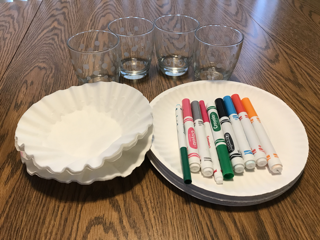
- Coffee filters
- Markers (avoid primary colors; black, purple, green, gray and orange tend to work well)
- Water
- Cup
- Something to cover your workspace, such as paper plates, newspaper or a plastic tablecloth
- Tape or pipe cleaner
INSTRUCTIONS
1. To protect your table, place the coffee filter on top of your table covering (such as a paper plate or newspaper). Flatten the coffee filter out.
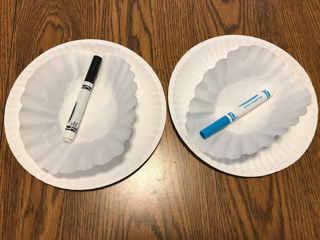
2. Choose a marker and draw a large circle around where the ridges meet the flat part of the coffee filter.

3. Fold the coffee filter into fourths to make a small cone, and add a small amount of water into a cup.
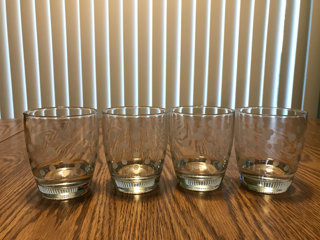
4. Place the coffee filter into the cup with the very tip of the coffee filter cone touching the water. Note: the water shouldn’t reach the marker line.
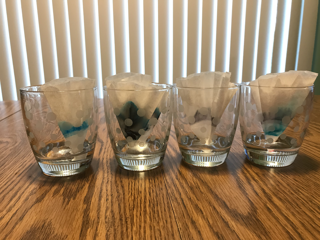
5. Let the coffee filter sit in the water for 5 to 10 minutes. Make observations every few minutes and note any changes you see.
6. After 5 to 10 minutes, the water should reach the end of the coffee filter. Remove the coffee filter from the water, open it up and lay it out flat to dry.
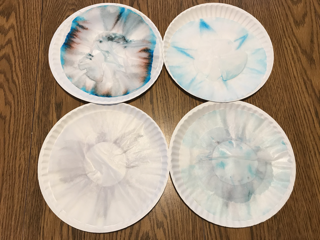
BONUS: Once dry, you can gather the center of the coffee filter and wrap tape or a pipe cleaner around it to make a flower.
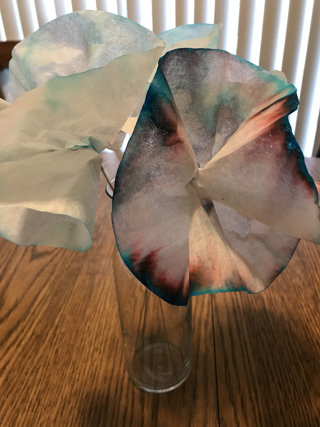
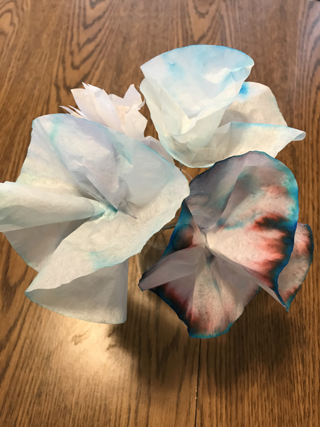
TIPS FOR PARENTS:
During and after the activity, ask your child:
- Where else have you seen colors spread?
- Before testing the marker, ask: Let’s make a hypothesis, or guess. What colors do you think make up this marker’s ink?
- After testing the marker, ask: Was your hypothesis correct?
- Do you think all marker brands use the same combination of ink to make the same marker color? How could we test that?
- What ideas do you want to test next time?
READY TO CONTINUE EXPLORING?
Check out the links below for some more cool activities and videos exploring chromatography!
Are black markers really black?
Tie dye with sharpies (can use white bandanas, cotton ribbon, lanyards, etc.)








